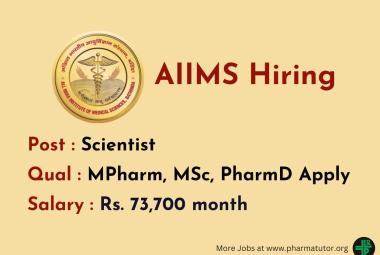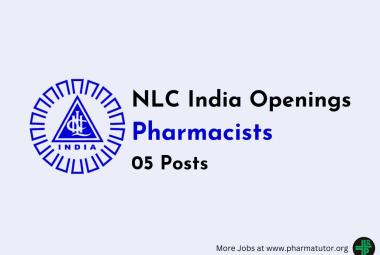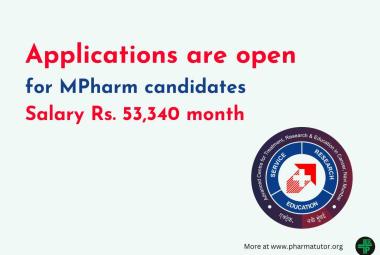About Authors: T.Venkatesh.Y.Nandini,L.Sai Kishore,V.Satish Kumar, P.Archana, G.malathi
Guided by: Ms.S.Rekha
DEPARTMENT OF PHARMACOLOGY.
Chilkur Balaji College of Pharmacy,Moinabad,Hyderabad.
ABSTRACT:
The purpose of the present study is to evaluate the anti-inflammatory activity “KSHEERABALA THAILAM” (an ayurvedic preparation of IMCOPS) by topical application against fresh egg white induced inflammation on Swiss albino rats. Using Randall and Baroth methodKsheerabala Thailam was investigated for the anti-inflammatory activity in Swiss albino rats against Diclofenac as standard reference and normal saline as control . The time taken for reduction of the inflammation in the rat paw was determined. The topical application of Ksheerabala Thailam exhibited significant anti-inflammatory activity when compared with the standard Diclofenac and normal saline. The topical application of Ksheerabala Thailam has anti-inflammatory effect on Swiss albino rats.
[adsense:336x280:8701650588]
INTRODUCTION
Inflammation is defined as a non-specific defensive response of tissues to a physical or chemical injury, or bacterial infection(1).The five cardinal signs of inflammation are hotness (calor) redness (dolor) ,swelling (edema) ,loss of function (due to accumulation of exudate) ,pain(2). When there is injury to any part of the body, the arterioles (minute blood vessels) in the surrounding tissue dilate (widen). This allows an increased blood flow to the area (redness). Vasoactive substances also increase the permeability (increase pore size) of these arterioles which allows blood cells, chemical mediators, blood proteins and fluid to accumulate in the area. This fluid accumulation causes swelling and may compress nerves in the area resulting in pain. Furthermore, the main chemical mediators of inflammation like prostaglandins, which are produced by cells, may also cause ‘irritation’ of the nerves and further contribute to pain.
Once at the site of injury, the individual components transported by the blood can carry out their necessary functions to protect the tissue. For example: white blood cells may ‘consume’ invading bacteria or the protein fibrin, may commence the clotting process if there is any bleeding. The red blood cells usually do not escape from the micro-vessels in the area unless there is a break in the vessel which may be seen as a hematoma. The chemical process of inflammation along with increased blood supply to the area causes heat.
Inflammation is usually a short term process intended to protect the body. Once the cause of the injury has been neutralized or the integrity of the living tissue has been secured, inflammation gradually subsides. Inflammation is a process and not a disease, however it may require treatment if it continues to persist or is causing significant discomfort in the lack of any threat to tissue integrity. In chronic conditions, inflammation is usually persistent but low grade, with occasional acute aggravations.
NSAIDs (Non-Steroidal Anti-inflammatory Drugs) drugs, like paracetamol; Corticosteroids inhibit the cells from producing prostaglandins, the main chemical mediator of inflammation an anti-histamine drug blocks basophils and mast cells from producing and secreting histamine(3). Although non steroidal anti-inflammatory drugs are the most commonly prescribed drugs in the world, their use as anti-inflammatory, antipyretic, antithrombotic and analgesic agents continues to be principally limited by their undesired side-effects (4).Hence, the traditional medical practitioners and scientists are turning towards medicinal plants and traditional system of medicines such as Siddha,Ayurveda, Unani, Homeopathic medicines and formulations to reduce the side effects and toxicity. Ksheerabala Thailam contains Sida rhombifolia, milk, oil of Sesamum indicum.Of these Sida rhombifolia is responsible for anti-inflammatory activity along with antioxidant activity. Oil of Sesamum indicum promotes wound healing activity. (NET)
MATERIALS:
Ksheerabala Thailam, a product of Imcops, is an ayurvedic preparation was purchased from Sri Sai Priya Ayurvedic stores,E.S.I.,Hyderabad-38, India used as test drug. Diclofenac i.v. formulation (Novartis),Hyderabad is used as reference standard and normal saline was used as control.
ANTI- INFLAMMATORY ACTIVITY:
Fresh egg white induced paw edema:
Anti –Inflammatory Activity of Ksheerabala Thailam was determined by Albumin induced hind paw edema using plethysmograph. Albino rats of either sex weighing 150-200 gram were divided into 3 groups and each group contained 3 animals. Group 1 was taken as control and received no drug. Group 2 received standard drug Diclofenac. Group 3 served as test and received Ksheerabala Thailam topically. Diclofenac injection was administered through intra peritoneal route and Ksheerabala Thailam was applied after the administration or injecting of 0.05 ml of egg albumin into sub-plantar region of the left hind paw of all groups of animals and left hind paw edema was measured by plethysmograph at 0 min, 15 min, 30 min, 60 min and 120 min,180 min,360 min. Calculate the percentage (%). Anti-inflammatory activity of Ksheerabala Thailam was calculated and compared with the standard (Diclofenac). The % Anti-inflammatory activity of Ksheerabala Thailam (Sida rhombifolia) was calculated by using the formula.
% Anti-inflammatory activity = [1- T/C] x 100
T – 60 min reading – 0 min reading (for drug)
C = 60 min reading – 0 min reading (for control)
STATISTICAL ANALYSIS:
The data obtained were expressed as mean ± SEM. Statistical analysis were performed by one way analysis of variance (ANOVA) followed by student’s test(5). At 95% confidence interval, P values < 0.001were considered significant (table-1).
The results are given in Table 1:
|
Group |
Drug |
Paw volume |
||||||
|
0 min |
15 min |
30 min |
60 min |
120 min |
180 min |
360 min |
||
|
I |
Control |
0.2 |
0.21 |
0.24 |
0.30 |
0.31 |
0.29 |
0.24 |
|
II |
Diclofenac (standard) |
0.2 |
0.2 |
0.15 |
0.15 |
0.13 |
0.11 |
0.10 |
|
III |
Ksheerabala Thailam( Test) |
0.25 |
0.25 |
0.23 |
0.19 |
0.15 |
0.12 |
0.12 |
RESULTS AND DISCUSSION:
KsheerabalaThailam produced a potent anti-inflammatoryactivity against the paw edema in Swiss albino rats when compared with reference standards (p< 0.001). The potency was found to be inversely proportional to the time (table-1) taken for reduction in the paw volume(figure-1) . The inflammatory response is a physiological characteristic of vascular tissue. Increased permeability seen in the inflammatoryreaction leads to exudation of fluid rich in plasmaproteins, coagulation factors and injured tissues withsubsequent edema at the site(6). Exudation which is aconsequence of vascular permeability is considered asmajor features of acute inflammation(7). Histamine andother mediators of inflammation increase vascularpermeability at various times after injury. Chemicallyinduced vascular permeability can causes animmediate reaction and its inhibitions suggests that thetopical administration of test formulation Ksheerabala Thailam may effectively suppress the exudative phase of acute inflammation induced by undiluted fresh eggwhite. The results also shows the effect of formulationon edematous response to egg white induced pawedema, provoking an inhibitory effect almost equal to that ofstandard Diclofenac.
After the observation of the results obtained, it was concluded that the(Sida rhombifolia) Ksheerabala Thailam posses considerable anti-inflammatory activity. Our pharmacological studies substantiate the use of Ksheerabala Thailam as a anti-inflammatory agent. This gives valuable information regarding the treatment of inflammatory condition with lesser side effects and toxicities, which are encountered in conventional pain killer drugs. The common adverse effects of conventional pain killers are ulcer, hepatotoxicity and nephrotoxicity on prolonged use in condition like arthritis etc. the adverse effects can be minimized by using Ksheerabala Thailam(Sida rhombifolia).
REFERENCES:
1.answers.com
2. wiki.answers.com
3. healthhype.com
4. Insel PA, 1996. Analgesic- antipyretic and anti-inflammatory agents and drugs employed in the treatment of gout. In: Hardman J G,Limbird A E, Molinoff P B, Ruddon R W,Goodman and Gilman’s. The Pharmacological Basis of Therapeutics. McGraw- Hill, NewYork, p. 617- 657.
5.A.R.Gennaro, The science and practice of Pharmacy, 19 th ed, Vol.1, (Mack publishing company, Easton PA, 1995), p.11.
6. Rang, H.P., In, Textbook of pharmacology, International Student Edn., ChurchillLivingstone, 1995,246.
7. Thirupathy, K.P., Ananda Vijaya Kumar, P.R. and Rajasekaran, A., Indian Drugs. 2001.38: 426.
Taken from: PHARMACOLOGICAL SCREENING OF ANTI-INFLAMMATORY ACTIVITY OF AYURVEDIC FORMULATION “NIMBADI THAILAM.\ DETERMINATION OF ANTIINFLMMATORY ACTIVITY OF CINNAMOMUM camphora Nees
Reference ID: PHARMATUTOR-ART-1032
FIND OUT MORE ARTICLES AT OUR DATABASE









